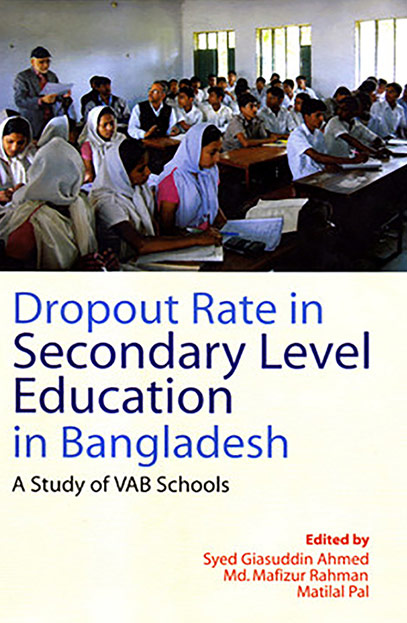- Shop
- Dropout Rate in Secondary Level Education in Bangladesh
Dropout Rate in Secondary Level Education in Bangladesh
https://uplbooks.com/shop/9789845060103-dropout-rate-in-secondary-level-education-in-bangladesh-8289 https://uplbooks.com/web/image/product.template/8289/image_1920?unique=337f592
| Language: English |
Tags :
Book Info
This study of ten high schools in rural Bangladesh, assisted by a US-based NGO, Volunteers Association for Bangladesh (VAB), presents detailed data on the dropout rate in each class from VI to X over a period of six years. The study follows students in Class VI through Class X for two academic cycles ending in 2007 & 2008 to estimate the dropout rate over the cycle. Importantly, the study also tries to identify the reasons for dropout through a survey of direct sources- students, teachers, parents and community leaders and provides an integrated analysis from these perspectives. Research reveals a trend of dropout starting at a slower pace of about 9-10 percent at Class VI, rising slowly to Class IX and ending with a ‘bang’ of around 60 to 70 percent at Class X. Easy promotion from Class VI onwards and the ultimate realization of the students that they are unable to cope with the demands of taking the test exam at Class X or the nationwide SSC exam and in many cases the inability to afford the exam fees may explain the reasons for this sudden rise in dropout at class X. The study confirms the prevailing views about the main reasons for dropout as being poverty and poverty related factors. There is unanimity in this regard among all the direct sources surveyed. There is also unanimity about the higher dropout among female students in rural Bangladesh, confirming prevailing views about the early marriage of girls, the household role of girls in life, and the lack of recognition of the need for their education. The study reveals the potential for reducing dropouts with coordinated efforts while dealing with the causes. In this regard interventions such as VAB’s Scholarship and other programs operating in Bangladesh since the year 2000 with the aim of improving attendance at schools of rural poor students. It is believed to have contributed to the reduction of dropouts by at least ten percent in two academic cycles. It is encouraging to note that the longer the school benefits from VAB scholarship and other complementary programmes, the larger the reduction in the dropout rate, in some schools by as much as thirty percent.

Matilal Pal
Matilal Pal has an M.A. in Economics from Dhaka University and an M.Phil. in economics from Yale University, USA. He worked at the Pakistan Institute of Development Economics (PIDE), Karachi, and was a Research Economist at the Bangladesh Institute for Development Studies (BIDS). Pal worked at the United Nations in the Department of Economic and Social Affairs (DESA). His major contribution there was to give a practical meaning to the concept of the ‘common heritage of mankind’, when resources are to be utilized for the benefit of all nations. He retired from the UN as a Principal Officer.

Md. Mafizur Rahman
Md. Mafizur Rahman is a Staff Researcher at the Research and Evaluation Division, BRAC, Bangladesh. He has obtained Masters Degree in Public Administration from Dhaka University. His fields of interest are public administration, governance and ethnic minorities in Bangladesh (Dhaka: A H Development Publishing House, 2009). He contributes regularly to Bangladeshi periodicals.



